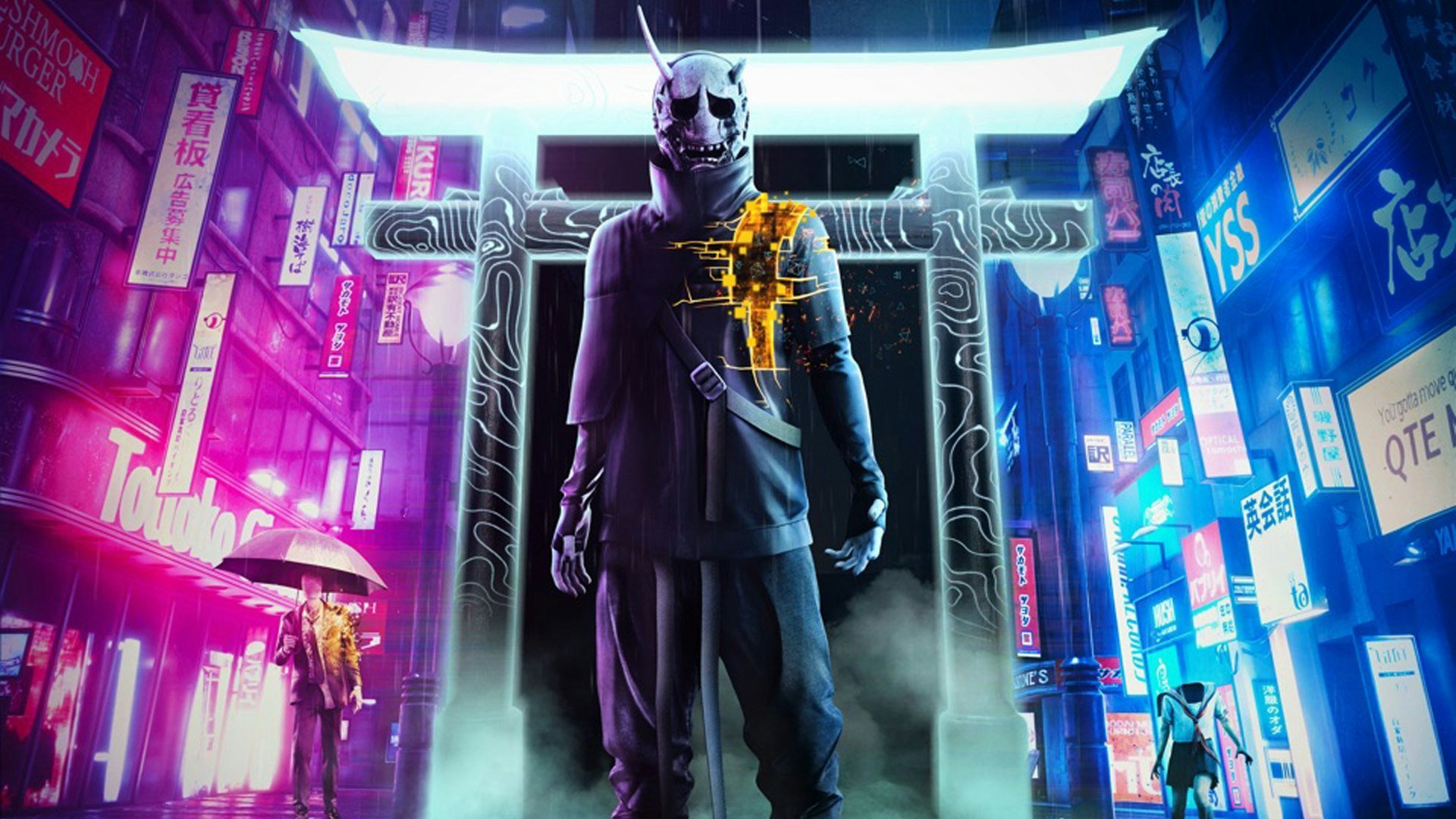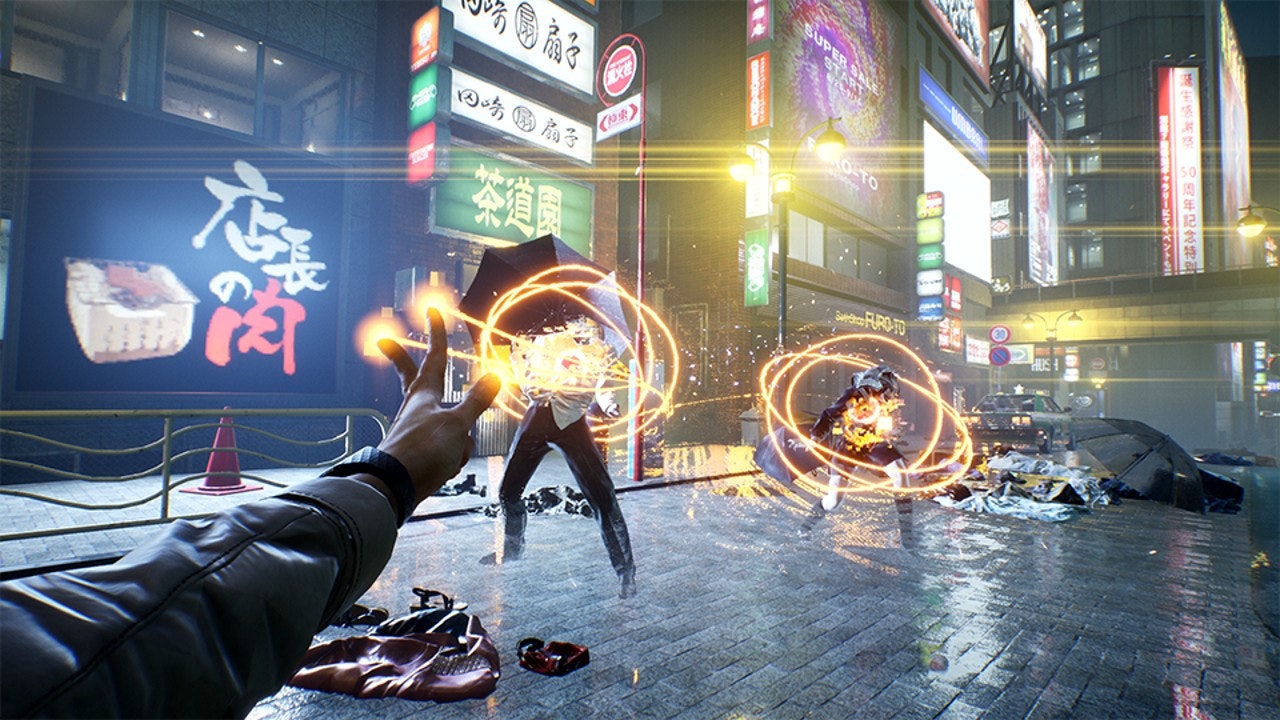
While roaming the unnervingly quiet streets of Shibuya, a peculiar movement caught the corner of my eye.
A cardboard standee sported a tail, and when I examined it closer, out popped a Tanuki wearing the most adorable little construction hat.
GhostWire: Tokyo feels like a guided tour of Tokyo, highlighted by oodles of paranormal creatures you need to blow away with elemental energy along the way. It’s a gorgeous recreation of a fascinating city, and an air of uneasiness permeates the world, proving Tango Gameworks is putting its expertise in horror to good use. But even though the first two chapters of GhostWire: Tokyo have a lot of great ideas that generally come together well, I’m worried the formula could wear a bit thin in the long run.
Paranormal Activities

GhostWire: Tokyo drops you into the fire immediately — your character Akito falls victim to a horrible accident, and lies dead in the middle of Shibuya Crossing. A mysterious spirit who goes by KK possesses Akito’s body, and without further ado, you’re thrust into the middle of a paranormal Tokyo, where everyone else has vanished.
The aesthetic and tone of GhostWire are absolutely top-notch, the street littered with clothing from the thousands of citizens that suddenly vanished. While not exactly a horror game, it certainly has a “spooky” air. The streets of Tokyo are realized stunningly, and while a lot of it isn’t interactive, it’s fascinating to look at the various shops, restaurants, and landmarks throughout the city.
As part of research for the game, the development team took long walks around Tokyo, taking pictures of things that caught their eye.
“We were able to rediscover what we normally see as part of our daily commute, started noticing the smaller, cooler things that might feel a little different for other perspectives,” director Kenji Kimura tells Inverse.
That careful attention to detail shines through. Many games take place in the Shibuya area of Tokyo, like Persona 5 and the Yakuza series. But GhostWire feels different — its streets feel more realistic and more lived-in, despite being abandoned. While wandering around you might see snacks and drinks open on a bench, their owners in the middle of a conversation when the mass vanishing happened, or a convenience store now run by a ghostly cat yokai. The city itself is easily the star of the game, and the developers at Tango Gameworks have worked carefully to capture its unique qualities.
“You'd be walking around a block of office buildings and turn a corner, then just immediately walk into like a shrine without knowing it. That sense of, you know, when you walk into a shrine, just by turning the corner, even the air tastes different, it feels like you've kind of like warped into a completely different zone,” says Producer Masato Kimura.
Of course, as attractive as the city may be, it’s nothing without interesting activities. So far, GhostWire seems to succeed on that front as well. The main story missions span an engaging variety of locations and objectives, but the surprisingly rich side missions are one of the biggest surprises, and each one feels meaningful and unique in some way. Oftentimes these quests will have you helping out lost spirits and unique creatures. One had me delving into a haunted bathhouse, while another set up a lengthy quest with a Tanuki boss (who talks like a gangster) having me hunt for his subordinates. These sidequests flesh out the experience, and I often found myself enjoying the self-contained stories or moral messages they focused on, and many of the side quests are based on Japanese folklore.
A Helping Hand

While I’m already invested in GhostWire’se world and story, I’m less certain how I feel about the combat, which falls somewhere between an action game and a shooter. You use an ability called “Ethereal Weaving” to fire elemental projectiles at enemies. You have gun-like wind ability, a slashing water ability, and an exploding fire ability. On top of that, you’ll also get equipment like a bow and arrow and stunning talismans to use.
There’s a flow to combat, as you alternate between dodging, blocking, and launching attacks. All of your weaving attacks have limited uses, and you’ll need to pick up charges by defeating enemies or breaking glowing objects in the environment. The first two chapters doa fantastic job of regularly introducing new spirits to contend with, and the real challenge comes from challenging multiple spirit types at once, from the quick headless schoolchildren to the absolutely terrifying scissor-wielding Kuchisake spirits. Combat feels incredibly responsive, and I’m excited to see how it expands across the full game.
There’s a fascinating visual flair to combat as well, particularly in the fluidity of the hand movements Akito uses. For reference, the development team looked at things like traditional ceremonies, portrayals of Ninjutsu, and a type of spellcasting known as Onmyōdō.
“We wanted to make the player feel like he was a master of being able to do these things,” says Masato Kimura. “We want to make it feel authentic and real, but still powerful. Because you're mustering up these powers and unleashing them onto your enemies.”
GhostWire: Tokyo brings together disparate elements that can oftentimes clash. Some players will enjoy that more than others, but it’s an idea that’s foundational to the game’s overall design. KK and Akito are very different people, and the conflict between them is a huge driving force in the story and gameplay.
“The biggest influences that we get while walking through life are the new people we meet that are so different from ourselves. Because of that big difference, it would feel like you're clashing with somebody else. Through the clashing of personalities, once you overcome that, you start to see from the other person's point of view, and gain some of the experience that other person has,” says Masato Kimura. “That clashing is kind of similar to how games get developed too. People come together with different ideas, and we kind of start to grow and gel together.”
GhostWire’s ethereal version of Tokyo is a joy to explore, and its core story has some nice intrigue that pushes it along. However, we’ll have to wait until March 25 to see if the luster wears off past those opening hours.







